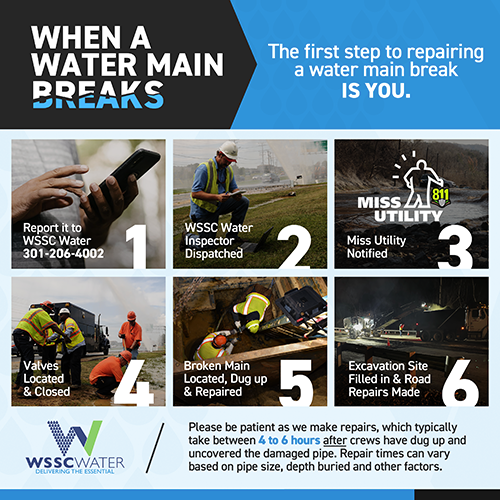Water Main Breaks
A water main break leaves hundreds of people without service and can cause serious traffic problems. So we take them seriously - especially in cold weather.
A water main break leaves hundreds of people without service and can cause serious traffic problems. So we take them seriously - especially in cold weather.
When cold weather arrives, the chance of water main breaks jumps by about 60% compared to warmer months. So we take winter preparations very seriously. WSSC Water has teams of skilled workers, trucks and heavy equipment standing by and ready to roll if a break happens.

How Temperature Impacts Water Mains
A sudden temperature drop causes a kind of shock to pipelines. Even a 10-degree change in the air or water temperature can dramatically increase stress on a pipe. Above-ground pipes can freeze when the air temperature hits freezing or below, and water temperatures below 40 degrees Fahrenheit can make pipes, including underground pipes, more brittle.
WSSC Water gets most of its water from the Potomac River, which feeds the Potomac Water Filtration Plant. When the air temperature drops, the Potomac's temperature drops too, bringing colder water into the system. It takes a day or two, but an increase in breaks and leaks soon follows. In contrast, water from the reservoirs formed by the Brighton Dam and the T. Howard Duckett Dam does not change temperature as quickly, because the reservoirs are deeper than the Potomac. That means fewer breaks and leaks in areas served by the Patuxent plant.
View our Interactive Water Main Breaks and Leaks Chart
Other Factors That Contribute To Breaks
Facts about water mains